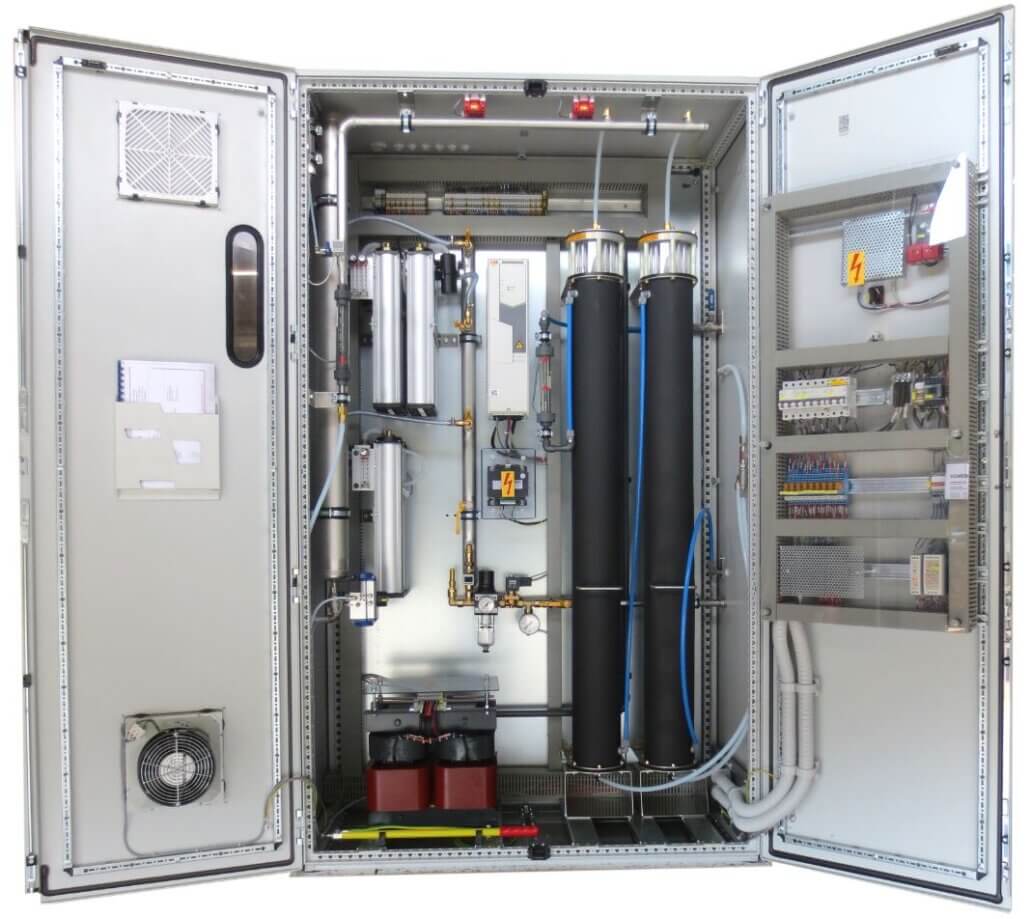Ozone – bringing water back to life
Ozone is the most powerful oxidising agent permitted for use in water treatment. It is a form of water treatment that may be used in place of chlorine to kill microbiological contaminants.
Ozone water treatment has been used for many years, but with the ongoing situation surrounding water scarcity it has come to the forefront of water treatment. Ozone effectively recycles rainwater and waste water to such a good quality it can be used for drinking water purposes in your facility.
Ozone systems have proven to be highly effective at eliminating all micro organisms and 99% of viruses, and is capable of destroying all bacteria, algae and biofilms within water systems, with no risk of resistance build-up or immunity.
Ozone provides you with chemical free, fresh tasting, purified, recycled drinking water which can be used throughout your building.

Benefits of Ozone
Ozone has a greater disinfection effectiveness against bacteria and viruses compared to chlorination. It has proven to be 51% stronger than chlorine and has a kill rate of 3.125 times faster. While this is a distinct advantage lets take a look at some of the other;
Chemical Free
The main benefit of using an ozone water treatment system is that you can get rid of any contaminants in the water without needing to add chemicals. The treatment process does not add any chemicals to the water and no pollutants are formed during ozone water treatment. Ozone dissipates in water over time and has no risks in drinking water.
This is also a huge benefit to the environment as it reduces the need for transport and eliminates chemical drums.
Highly Effective
Ozone is one of the best oxidizers and has an instant effect in water, neutralizing microorganisms like viruses and bacteria. Ozone is 51% stronger than chlorine and has a kill rate of 3.125 times faster. It readily and rapidly eliminates 99% of known viruses and all micro organisms.
It also has a shorter contact time than chlorine and breaks down to oxygen after 20 mins.
No Smell or Taste
Unlike chlorine and other disinfection chemicals, ozone has no taste or smell in water, so it won’t negatively affect water quality. It destroys odours & disinfects air, water, and other materials.
Re-use
Any wastewater is safe to re-enter waterways and surface drains, saving energy and money. Wastewater can then be used in other grey water applications, saving water top up from other sources.
Low Maintenance
Ozone is generated on-site, with minimal service visits per year required (approx. 2/3). It is a fully automatic, multi – barrier system with self cleaning filters. The pipes are also made of PVC which are corrosion resistant.
Other Parameters
Ozone also oxidizes metals like iron, sulfur and manganese. This means greater contaminant removal from a single application.
It doesn’t require specific water parameters, the effectiveness of ozone doesn’t decrease with fluctuating water pH, so you can get the same results from using ozone in acidic water as you would with alkaline water.
How it works
Ozone is generated by the use of electricity, it uses a corona discharge to produce ozone in the same way that ozone is produced in a lightning storm.

A generator produce a high voltage electrical discharge that penetrates oxygen stored in a steel, ceramic, or glass chamber. This causes oxygen to break down to produce ozone, which is sent into water in a venturi or bubbled into water to begin the treatment process.
The process
- Raw water enters the system and is firstly filtered
- Ozone is then added to the water. Ozone is rapid to act and has a contact time of approx. 5- 10 mins. After this the Ozone will start to break down.
- This treated water is then put through another filter process
- The water is then put through a final carbon filter
- After the filtration process the water is put through and Ultra Violet light to ensure all impurities are removed
- Water is then put back into the system
A final stage of chemical dosing can also be introduced if required.
Conclusion
Using ozone for water treatment is a highly effective means of destroying pathogens, oxidizing metals, and eliminating bad tastes and odors.
While ozone treatment is a more expensive set up option than other methods of water disinfection, it generates quick results and doesn’t negatively affect water quality. You will also see your investment pay off within a year or so depending on your facility and see your energy and water saving increase.






